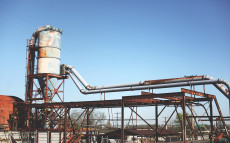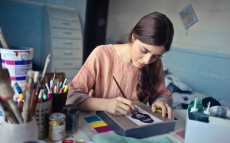- pathfindersAI
- Job Profile
Costume Attendants
Summary
Costume Attendants: Crafting Theatric Excellence
What They Do
Costume Attendants play an essential but often unsung role in the world of theater, film, and television production. They are responsible for the care, maintenance, and organization of costumes, ensuring that each item is ready for every performance or shoot. Costume Attendants work closely with costume designers, directors, and actors to ensure that each costume is presented to its best effect, contributing significantly to the overall aesthetics and authenticity of a production. Through their meticulous attention to detail, Costume Attendants help bring characters to life, making them a crucial element in the storytelling process.
Job Responsibilities
The primary responsibilities of Costume Attendants encompass a wide range of tasks designed to ensure that costumes are in peak condition and accurately reflect the vision of the production team. They begin their work by organizing and cataloging costumes, recording detailed information about each piece. Maintenance tasks include repairing and altering costumes, as well as performing regular cleaning and pressing.
During performances or filming, Costume Attendants assist actors with quick changes, ensuring they transition smoothly between scenes. They are also responsible for fitting sessions, working with designers to make necessary adjustments. Additionally, Costume Attendants might track costume continuity to ensure consistency across different scenes and shoots. Their backstage presence is vital, ensuring that the costumes not only fit well but also contribute to the seamless flow of the production.
Essential Skills
To excel as a Costume Attendant, one must possess a combination of technical skills, creativity, and interpersonal acumen. Proficiency in sewing and garment alterations is paramount, as is an aptitude for organization and attention to detail. A keen eye for fabric types, colors, and historical fashion trends can also be extremely beneficial.
Furthermore, the role requires strong communication skills; effective collaboration with designers, performers, and directors is essential for meeting the production’s artistic vision. The ability to work well under pressure, especially during quick changes and tight deadlines, is vital. An understanding of costume care, as well as an appreciation for the problem-solving nature of the job, rounds out the essential skill set for a successful Costume Attendant.
Educational Pathways
While formal education is not always a strict requirement, a background in theater arts, fashion design, or costume design can be incredibly advantageous. Many community colleges and state universities offer programs and courses that specifically focus on costume design and maintenance. These programs typically cover areas such as sewing, textile care, and the history of fashion.
Internships and apprenticeships provide invaluable hands-on experience, often serving as a bridge between academic training and professional work. Workshops and additional certifications, such as those offered by professional trade organizations, can further bolster one’s suitability for advanced roles in this field.
Career Prospects
The demand for skilled Costume Attendants remains robust across various entertainment sectors, including theater companies, film studios, and television production houses. Starting as a Costume Attendant can lead to opportunities for advancement into roles such as Wardrobe Supervisor or Costume Designer, especially with significant experience and a strong portfolio.
Additionally, there are opportunities to work in related fields such as fashion styling for photoshoots and fashion shows, or even in historical costume preservation for museums and heritage organizations. The diverse nature of the skills learned ensures that Costume Attendants have a broad array of career prospects to explore.
Conclusion
Costume Attendants are pivotal to the success of any theatrical or cinematic production, providing essential services that ensure costumes are in optimal condition and actors are appropriately attired. With responsibilities ranging from maintenance and alterations to dressing actors and managing costume continuity, the role demands a unique blend of technical skill, creativity, and effective communication.
Educational pathways in theater arts and fashion design, complemented by hands-on experience and additional certifications, pave the way for a fulfilling career in this field. The prospects for career growth are promising, with potential roles in various entertainment sectors and beyond. As a Costume Attendant, you don't just make garments; you create the visual narrative that helps bring stories to life.
Video
Compensation
| State | Median Salary | Median Hourly | Positions |
|---|---|---|---|
| AZ | 34,670 | 16.67 | 30 |
| CA | 70,740 | 34.01 | 2,070 |
| CT | 48,140 | 23.15 | 50 |
| DC | 82,580 | 39.70 | 50 |
| FL | 56,050 | 26.95 | 370 |
| GA | 80,510 | 38.71 | 210 |
| HI | 53,680 | 25.81 | 50 |
| IL | 43,460 | 20.89 | 150 |
| IN | 37,850 | 18.20 | 40 |
| KY | 40,750 | 19.59 | 30 |
| MA | 46,540 | 22.38 | 80 |
| MI | 36,750 | 17.67 | 70 |
| MN | 65,380 | 31.43 | 70 |
| MO | 34,540 | 16.61 | 100 |
| NV | 46,680 | 22.44 | 390 |
| NJ | 54,470 | 26.19 | 160 |
| NY | 61,200 | 29.42 | 910 |
| NC | 38,390 | 18.46 | 50 |
| OH | 41,960 | 20.17 | 110 |
| OR | 43,260 | 20.80 | 30 |
| PA | 46,310 | 22.27 | 210 |
| SC | 29,940 | 14.39 | 80 |
| TN | 42,230 | 20.30 | 60 |
| TX | 36,890 | 17.74 | 240 |
| UT | 43,820 | 21.07 | 150 |
| VA | 49,260 | 23.68 | 60 |
| WA | 43,580 | 20.95 | 90 |
| WI | 36,310 | 17.46 | 100 |
Similar Occupations
In this area you will find other occupations that are close to the one you were viewing in tasks, knowledge and work environment. If the primary job profile you are viewing isn't quite to your liking, take a look around and see what else is available.
Basic and Premium Accounts have more alternative occupations available than the Free account.

Fabric and Apparel Patternmakers - 51-6092.00
Fabric and Apparel Patternmakers create templates for the construction of clothing and other textile products, ensuring precise measurements, shapes, and styles align with design specifications. They transform designers' concepts into detailed pattern pieces that guide the cutting and assembly process in garment manufacturing.
-
$62,510/yr
Median Pay -
2,670
Number of Jobs

Fashion Designers - 27-1022.00
A fashion designer conceptualizes and creates original clothing, accessories, and footwear by sketching designs and selecting fabrics, patterns, and colors. They stay current with trends and often oversee the production of their designs to ensure quality and alignment with their artistic vision.
-
$79,290/yr
Median Pay -
19,940
Number of Jobs